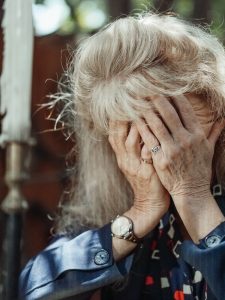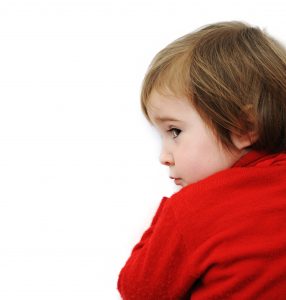 If you want a tongue-in-cheek look at how public attitudes about domestic violence have changed over time, take a couple of hours and watch the classic film The Quiet Man (1952), starring John Wayne and Maureen O’Hara. Set in rural Ireland, this John Ford film takes a humorous (but admittedly politically incorrect) look at the volatile dynamic in husband-wife relationships. It’s almost jarring today to see the various ways the characters in the film “wink the eye” at domestic violence in the movie. At one point during the main characters’ courtship, their chaperone quips to O’Hara’s character, Mary Kate: “Have the good manners not to hit the man until he’s your husband and entitled to hit you back.” During the climax of the film, while Wayne’s character Sean Thornton hauls Mary Kate by arm across the Irish countryside with a crowd following, one of the villagers courteously hands Thornton a stick “to beat the lovely lady.”
If you want a tongue-in-cheek look at how public attitudes about domestic violence have changed over time, take a couple of hours and watch the classic film The Quiet Man (1952), starring John Wayne and Maureen O’Hara. Set in rural Ireland, this John Ford film takes a humorous (but admittedly politically incorrect) look at the volatile dynamic in husband-wife relationships. It’s almost jarring today to see the various ways the characters in the film “wink the eye” at domestic violence in the movie. At one point during the main characters’ courtship, their chaperone quips to O’Hara’s character, Mary Kate: “Have the good manners not to hit the man until he’s your husband and entitled to hit you back.” During the climax of the film, while Wayne’s character Sean Thornton hauls Mary Kate by arm across the Irish countryside with a crowd following, one of the villagers courteously hands Thornton a stick “to beat the lovely lady.”
Perhaps just as telling is Maureen O’Hara’s description of what happened to her behind the scenes while shooting the film. In a noteworthy commentary, O’Hara claims she literally broke her wrist when John Wayne blocked a punch during one scene, and she had to finish the scene in piercing pain. She also claims that during the climactic scene described earlier, her character was supposed to stumble and have Wayne drag her face-first through the dirt—except that Wayne and the director had filled the spot with sheep dung as a “practical joke.”
While these antics (both on and off-screen) would be considered completely inappropriate today, they underscore how much public views of domestic violence have changed across several generations. In truth, domestic violence has been a blight on human culture for many centuries—the main thing that changes is how permissive society is toward it. Looking back just a few decades, it can be surprising to see how much women, in particular, were subjected to in earlier times, and how much they were simply expected to put up with as “the way things were.” Even our grandparents and great-grandparents likely had a different view of domestic violence than we do today. Let’s launch into a deeper look at how earlier generations looked at this issue in Western culture (i.e., Europe and the Americas), both to see how far we’ve come and what we may have yet to learn.
 When domestic violence happens in the home, it’s seldom caused by just one thing. While we are all accountable for our choices and our actions, there may be many contributing factors that increase the likelihood of DV occurring. Let’s continue our exploration into habits and behaviors (some unexpected) that may help create a scenario where domestic violence is more likely to occur.
When domestic violence happens in the home, it’s seldom caused by just one thing. While we are all accountable for our choices and our actions, there may be many contributing factors that increase the likelihood of DV occurring. Let’s continue our exploration into habits and behaviors (some unexpected) that may help create a scenario where domestic violence is more likely to occur.  Los Angeles DUI Attorney Blog
Los Angeles DUI Attorney Blog










